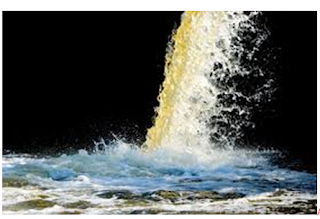Types of chemicals used in wastewater treatment?
Consuming transparent and clean water is a great challenge. Not everyone has access to it. One way to ensure the quality of the water is to purify it by adapting to the right water treatment process. Water purification is the removal of contaminants to produce potable water. When water is purified, harmful substances, parasites, bacteria, algae, fungi and any other type of agent that can reduce its quality are eliminated.With efficient Water Treatment Systems we reduce the risk of new contamination in the distribution system. Even natural spring water that was considered safe for all practical purposes in the 19th century must now be tested to determine what type of treatment is necessary.
Types of contamination
Untreated water contains
natural elements and different types of components, including dangerous
chemicals such as fertilizers, pesticides, petroleum derivatives or heavy
metals. It can contain microbiological contamination, as well as different
types of organic and inorganic compounds, such as ions, sediments, colloids,
and suspensions. Wastewater is highly harmful to the natural environment and
therefore proper Water Treatment
is necessary.
Today, sewage disposal and
water purification are a huge challenge faced by more and more cities,
factories, plants and households around the world. Physical treatment methods
that include flocculation, modification and adsorption cannot always provide
drinking water of adequate quality. It is why Water Treatment Dubai must go through several other methods,
to ensure the quality of the pure water.
Wastewater
treatment
The wastewater is any kind of water
resources, whose quality has been affected. The reuse of wastewater is a very
attractive approach for the protection of the environment since waste water treatment allows the use
of natural resources for human development and prevents the indiscriminate
waste of such a vital resource in human life. The shortage of fresh water as a consequence
of demographic growth and climate change, has led to the implementation of such
a laudable ecological proposal in the economic and industrial development of
life in society.
The discharge of wastewater into hydrological channels without the respective treatment can lead to the total destruction. Waste water treatment consists of a series of physical, chemical and biological processes. This process of purification of wastewater is divided into 4 stages such as preliminary or pre-treatment, first, secondary and tertiary.
Types
of chemical used
For the chemical treatment
of waste water, Water Treatment
Companies in Dubai give special importance with the use of chemicals. A
few of them are –
Ø
Algaecide:
These chemicals kill algae when added to water.
Ø Powder: The antifoam powder covers a group of products based on modified Polydimethylsiloxane. They are odorless, tasteless, permanent, non-toxic and do not corrode materials.
Ø
Emulsions:
Antifoam emulsions have the same characteristics as the powder form. The
only difference is that they can also be applied in aqueous solutions.
Ø
Coagulants:
When referring to coagulants, positive ions with high valence are
preferred. Generally aluminum and iron are applied.
Ø
Corrosion
inhibitors: Corrosion can lead to damage to critical parts of the boiler
system. This is the reason why corrosion inhibitors are often applied.
Ø
Disinfectants:
Disinfectants kill unwanted microorganisms in water. There are several
types of disinfectants: Chlorine, Chlorine dioxide, Ozone, etc.
Ø Oxidizers: Chemical oxidation processes use oxidants to reduce COD/BOD levels, and to remove oxidize inorganic and organic components.
Ø PH Conditioners: During water treatment, pH adjustment may be required. The pH is increased or decreased through the addition of bases or acids.
How does water disinfection work?
Water disinfection means the removal, deactivation or
elimination of pathogenic microorganisms that exist in the water. These agents
also extract organic pollutants from the water, which are nutrients or shelter
for microorganisms. The combination of different steps for water purification
is used for the production of drinking water and safe for health. As an
additional measure, professional water treatment companies use a secondary
water disinfection method to avoid and protect the water from biological
contamination that could occur in the distribution network.Normally a different
type of disinfectant is used than the one used in the purification process
during previous stages. Secondary disinfection treatment, such as Chilled Water Chemical Treatment,
ensures that bacteria do not multiply in the water distribution system. This is
necessary because bacteria can remain in the system and in the water despite a primary disinfection treatment.



Comments
Post a Comment